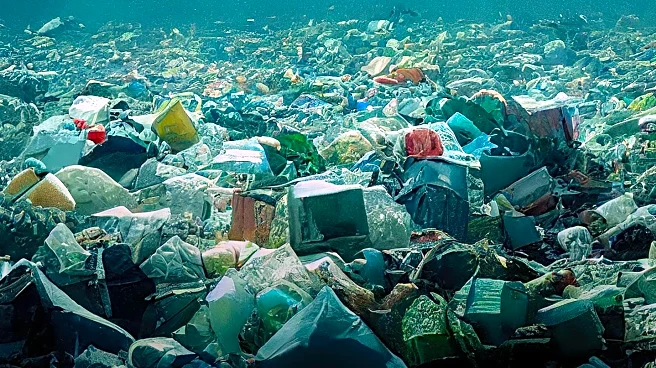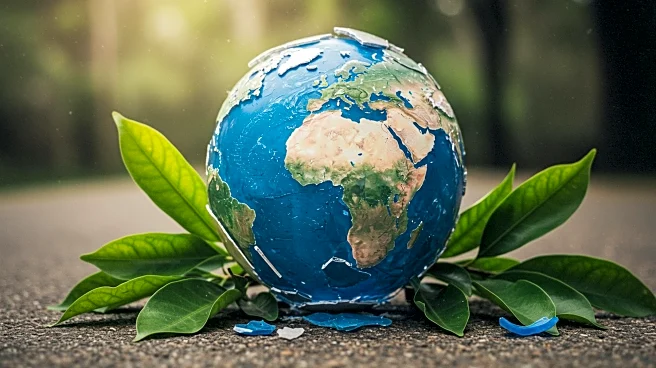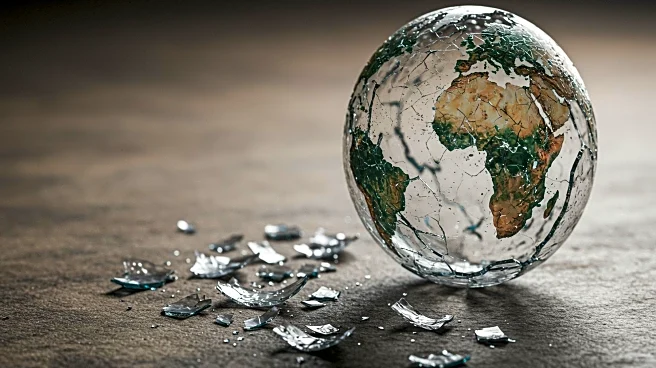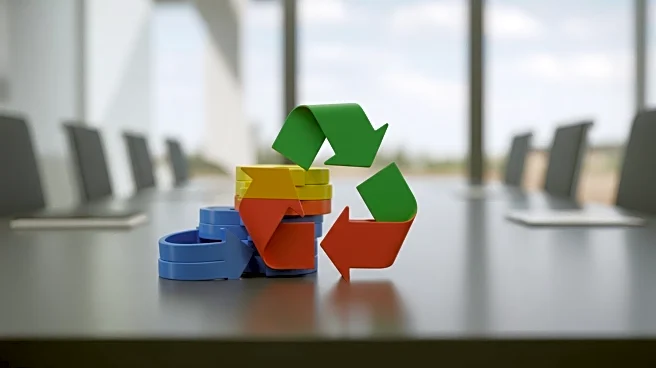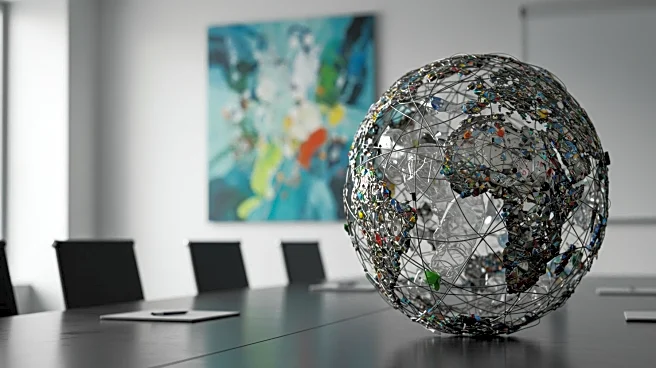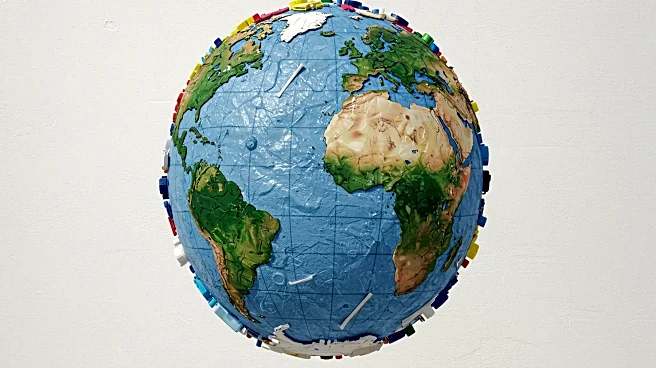What's Happening?
Recent studies have highlighted the pervasive presence of microplastics in the environment and their infiltration into human bodies. Researchers have found microplastics in every organ, including the brain, with humans reportedly inhaling the equivalent of a credit card's weight in microplastics weekly. These tiny particles are not only found in human tissues but also in fish and plants, affecting reproduction and photosynthesis. The degradation of plastic objects contributes to this pollution, as they break down into microplastics and nanoplastics. The health implications are concerning, with correlations observed between microplastics and various diseases, including cancers, cognitive disorders, and heart conditions.
Why It's Important?
The widespread contamination of microplastics poses significant health risks and environmental challenges. The presence of microplastics in human organs and their potential link to serious health issues such as Alzheimer's and cancer underscore the urgent need for further research and policy intervention. The environmental impact is equally alarming, as microplastics interfere with natural processes in plants and animals, potentially disrupting ecosystems. This issue highlights the broader implications of plastic pollution and the need for sustainable practices to mitigate its effects on health and the environment.
What's Next?
Further research is needed to fully understand the health impacts of microplastics on humans and the environment. Policymakers may need to consider stricter regulations on plastic production and waste management to reduce microplastic pollution. Public awareness campaigns could be essential in educating individuals about the risks associated with microplastics and encouraging sustainable practices. The scientific community is likely to continue investigating the links between microplastics and health conditions, potentially leading to new guidelines and recommendations.
Beyond the Headlines
The issue of microplastics raises ethical questions about consumer responsibility and corporate accountability in managing plastic waste. It also highlights the need for innovation in developing biodegradable materials and alternative solutions to reduce reliance on plastics. The cultural shift towards sustainability and environmental consciousness may gain momentum as awareness of microplastic pollution grows, influencing consumer behavior and industry practices.
